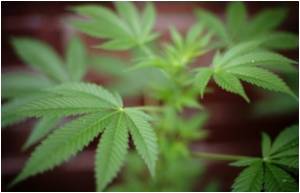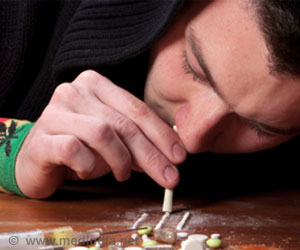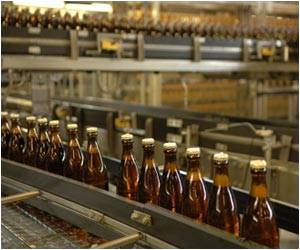College student marijuana use continues its nearly decade-long increase, suggested the most recent national Monitoring the Future study.

‘While certain drugs have declined in popularity quite rapidly among the college students, marijuana use continues its nearly decade-long increase.’





However, in 2015 their daily use fell back some to 4.6%, or one in every 22 college students. A decline in the degree of risk of harm associated with using marijuana may account for much of the increase in use. Since 2003, proportions of 19-to-22-year-olds seeing regular use of marijuana as dangerous to the user has fallen sharply - from 58% in 2003 to 33% by 2015. "This increase in use and decrease in perceived risk of harm regarding marijuana use should be taken seriously by college administrators, parents and students themselves. We know through other research that frequent marijuana use can adversely affect academic performance and college completion," said John Schulenberg, one of the study's lead researchers and research professor at the University of Michigan's Institute for Social Research.
In contrast to the story for marijuana use, other types of drug use are declining among college students. Nonmedical use of prescription narcotic drugs has been declining among college students since reaching a high in 2006 of 8.8% annual prevalence (that is, any use in the prior 12 months). By 2015, 3.3% of college students reported using any narcotic drug in the past 12 months without medical supervision - a drop of about six-tenths.
"It appears that college students, at least, are hearing and heeding the warnings about the very considerable dangers of using narcotic drugs," said Lloyd Johnston, the study's principal investigator and ISR distinguished senior research scientist and research professor.
Use of heroin, another narcotic drug, has been low among college students for many years. The highest annual prevalence recorded since 1980 was in 1998 at 0.6%, but the rate has been at or under 0.3% since 2005 and was down to 0.1% in 2015.
Advertisement
"It appears that the increase in nonmedical use of prescription stimulant drugs may have passed its peak, though about one in 10 college students still report using them in the prior 12 months," Johnston said.
Advertisement
For example, past-year use of synthetic marijuana, which is usually sold over the counter under such brand names as "K-2" and "Spice," dropped from 8.5% when first measured in 2011 to just 1.5% in 2015 - a decline of about 80%. Salvia has fallen from 5.8% when its use was first measured in 2009 to just 0.4% in 2015 - a decrease of more than 90%.
Some other drugs never gained much of a foothold on American college campuses. Past-year use of so-called "bath salts," a form of synthetic stimulants usually sold over the counter, has never exceeded 0.3% among college students since first being measured in 2012, and stands at 0.1% in 2015.
Past-year use of inhalants has been below 2% since 2005. The so-called "club drugs," Rohypnol and GHB, never really caught on, and have had negligible rates of use among college students.
Annual nonprescribed use of tranquilizers (4.3%) and sedatives (2.3%) has changed little in recent years, although these annual prevalence rates in 2015 are below those observed in the college population in the early 2000s.
In general, college males are more likely than college females to use nearly all of the illicit drugs. Sedatives are the primary exception; and there the genders are very close in their annual prevalence rates.
Cigarette smoking continues to decline gradually among college students, but the cumulative drop over the past 16 years has been dramatic. A peak rate of any smoking in the prior 30 days was reached in 1999 at 31%.
By 2015, the rate had fallen by nearly two-thirds to 11%, a record low. Daily smoking declined even more, from 19.3% in 1999 to 4.2% in 2015 - a drop of nearly four-fifths and also a record low since 1980.
"The study shows that large declines in smoking rates have been occurring among secondary school students, as well," Johnston said. "So much of the improvement among college students actually began when they were still in high school."
Their high school classmates not in college have dramatically higher rates of smoking. In 2015, 23% of them indicated past-month smoking, compared to 11% among the college students.
Heavy smoking is even more concentrated among those not in college, with their half-pack-or-more-per-day smoking rate at 9.1% versus 1.4% among college students.
"Cigarette smoking has become increasingly concentrated among the less educated," Johnston said.
Through 1993, college females had higher rates of smoking than college males; but since 1994, the opposite is true.
Electronic vaporizers, which include e-cigarettes, were used in the month prior to the survey by 14% of college males and 6% of college females.
Alcohol clearly remains the drug of choice among college students, with 79% indicating that they used in the past 12 months and 63% in the past 30 days.
Indeed, 62% said they were drunk at least once in the past 12 months and 38% in the past 30 days. So drinking and drunkenness remain quite commonplace on the nation's college campuses, even though there has been some modest falloff in these rates since the early 1980s.
Binge drinking - defined as having five or more drinks on at least one occasion in the past two weeks - was reported by 40% of all college students in 2015 (close to the 38% who reported being drunk in the last month).
While the rate of binge drinking has gradually declined among college males over the past 30 years, there has been very little change in the rate among college females, resulting in some closing of the gap between genders (though males have consistently had a higher rate of binge drinking).
"Of even greater concern than binge drinking is what we have called 'extreme binge drinking,' defined as having 10 or more drinks - or even 15 or more drinks - on at least one occasion in the prior two weeks," Johnston said.
Over the years 2011 to 2015 combined, about one in nine college students reported having 10 or more drinks in a row on at least one occasion in the prior two weeks, while one in 25 reported having 15 or more drinks in a row at least once in the same interval.
"Drinking at these levels can result in alcohol poisoning, serious accidents, and a host of unwise and dangerous behaviors," Johnston said. "So this remains a serious problem to be addressed."
Source-Eurekalert












